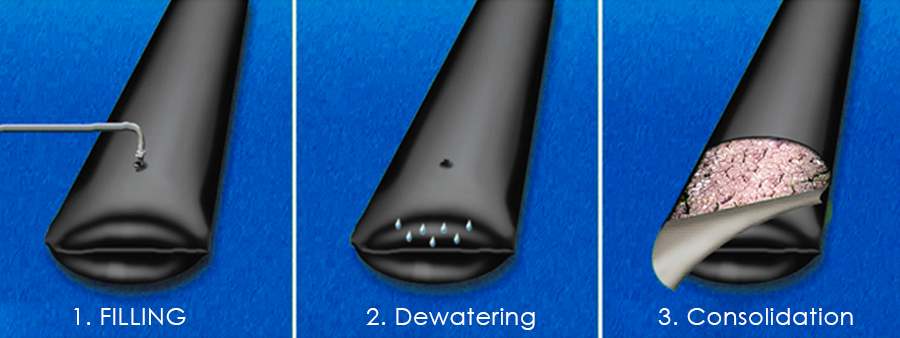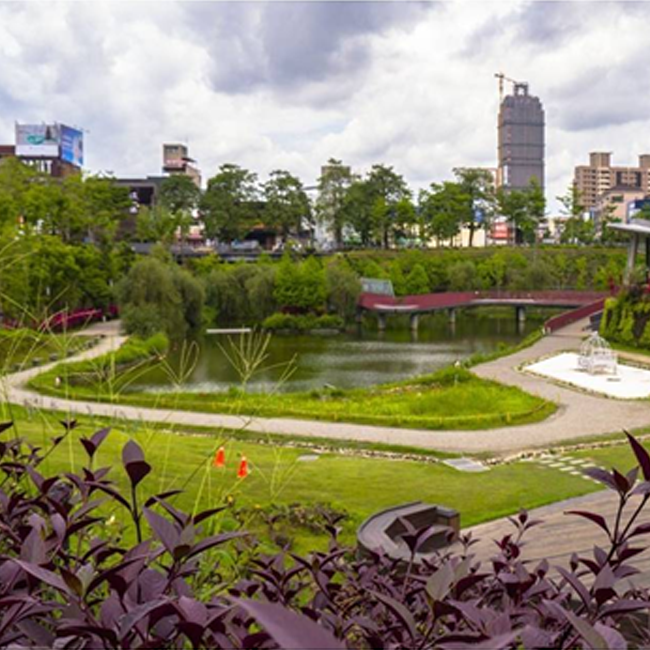Dewatering of sludge with M-tubes is a three-step process:

01.
Filling
Sludge (slurry material) is pumped into theM-tube container. Environmentally-safe polymers are added to the sludge, which makes the solids bind together and water separate. The M-tube container's unique fabric confines the fine grains of the material.
02.
Dewatering
Clear effluent water simply drains from the M-tube container through the small pores in the specially engineered textile. This results in effective dewatering and efficient volume reduction of the contained materials. The volume reduction allows for repeated filling of the M-tubecontainer. Over 99% of solids are captured, and clear filtrate can be collected and recirculated through the system. The decanted water is often of a quality that can be reused/returned for processing or returned to native waterways without additional treatment.
03.
Consolidation
After the final cycle of filling and dewatering, the solids remain in the bag and continue to densify due to desiccation as residual water vapor escapes through the fabric. Volume reduction can be as high as 90 percent. When full, the M-tube container and contents can be deposited at a landfill, and remain on-site, or the solids can be removed and land-applied when appropriate.
